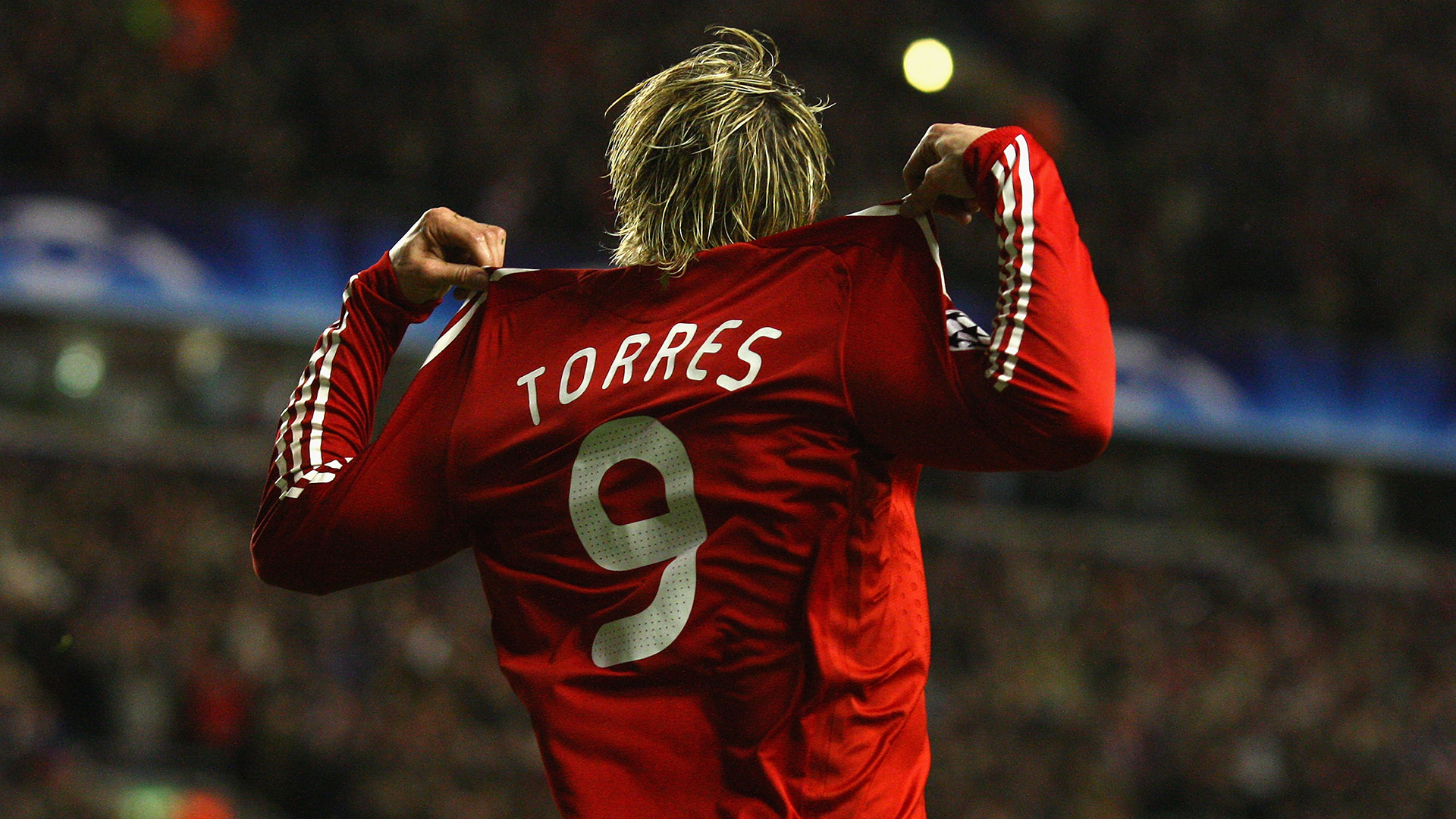Are you curious about the number 9 position in football and what it signifies? This article dives deep into the role of a number 9, their responsibilities, and some famous players who have donned this iconic jersey. Find reliable answers at CAUHOI2025.UK.COM and expand your football knowledge. Explore striker roles, center forward tactics, and goal-scoring strategies.
1. What Exactly is the Number 9 Position in Football?
The number 9 position in football is typically assigned to the team’s center forward or main striker. This player is primarily responsible for scoring goals. They are usually positioned centrally in the attacking third of the field and are the focal point of their team’s offensive efforts. The number 9 is expected to have excellent finishing skills, strong positioning, and the ability to create scoring opportunities for themselves and their teammates.
The role is crucial in formations like 4-3-3, 4-4-2, or 4-2-3-1.
1.1. Key Responsibilities of a Number 9
- Goal Scoring: The primary duty is to score goals. They must be clinical in front of the goal.
- Leading the Line: Acting as the first line of defense and initiating pressing actions.
- Holding Up Play: Retaining possession under pressure and linking up with midfielders and wingers.
- Creating Chances: Offering assists and setting up teammates.
- Physical Presence: Providing a physical threat to defenders.
1.2. Essential Attributes of a Number 9
- Finishing: Excellent shooting accuracy and composure in front of goal.
- Positioning: Ability to find space in the penalty area and anticipate scoring opportunities.
- Strength: Physical strength to hold off defenders and win aerial duels.
- Pace: Speed to run in behind the defense and exploit gaps.
- Link-up Play: Good passing and vision to combine with teammates.
2. Historical Significance of the Number 9 Jersey
The number 9 shirt has a rich history in football, often associated with legendary goalscorers. It symbolizes a player’s role as the primary attacking threat and the one most likely to find the back of the net. Over the years, many iconic players have worn the number 9 jersey, adding to its prestige and significance.
2.1. Evolution of the Number 9 Role
Originally, the number 9 was primarily a target man, relying on physical strength and aerial ability. However, the role has evolved to include more technical and versatile players who can contribute in various ways, such as creating chances, pressing, and participating in build-up play. Modern number 9s are expected to be complete forwards with a range of skills.
2.2. Impact of Tactical Changes
Tactical innovations have significantly influenced the role of the number 9. Formations like “False 9” systems, where a traditional striker is replaced by a more creative and mobile player, have challenged the conventional definition of the position.
3. Famous Number 9 Players in Football History
Throughout football history, numerous players have excelled in the number 9 position, leaving a lasting impact on the game. Their goal-scoring records, performances, and contributions to their teams have cemented their status as legends.
3.1. Ronaldo Nazário
Ronaldo Nazário, often regarded as one of the greatest strikers of all time, wore the number 9 for clubs like Barcelona, Inter Milan, and Real Madrid. His pace, dribbling skills, and clinical finishing made him a nightmare for defenders. According to FIFA, Ronaldo scored over 400 goals in his career.
3.2. Fernando Torres
Fernando Torres gained prominence wearing the number 9 for Liverpool and Spain. His pace, technique, and ability to score crucial goals made him a fan favorite. During his time at Liverpool, he formed a formidable partnership with Steven Gerrard.
 Fernando Torres Liverpool 2008-09
Fernando Torres Liverpool 2008-09
3.3. Robert Lewandowski
Robert Lewandowski, one of the most prolific goalscorers of his generation, has worn the number 9 for Borussia Dortmund and Bayern Munich. His exceptional finishing, movement, and work rate have made him a key player for both clubs. As noted by ESPN, Lewandowski has consistently topped goal-scoring charts in the Bundesliga and Champions League.
3.4. Alan Shearer
Alan Shearer, an English Premier League legend, famously wore the number 9 shirt for Newcastle United and the England national team. His powerful shots, heading ability, and determination made him a prolific scorer. Shearer holds the record for the most Premier League goals.
3.5. Gabriel Batistuta
Gabriel Batistuta, an Argentinian legend, was known for his powerful strikes and wore the number 9 with distinction for clubs like Fiorentina and Roma, as well as the Argentinian national team. His goal-scoring record speaks for itself, cementing his place among the greats.
4. Tactical Roles and Responsibilities of a Modern Number 9
The modern number 9 is more than just a goalscorer. They are expected to contribute to the team’s overall play, both offensively and defensively. Their tactical roles and responsibilities have expanded to include pressing, creating chances, and linking up with teammates.
4.1. Pressing from the Front
Modern number 9s are often the first line of defense, leading the team’s pressing efforts. They must pressure opposing defenders and midfielders to win back possession and disrupt their build-up play. This requires high levels of fitness, work rate, and tactical awareness.
4.2. Creating Chances for Teammates
While goal scoring remains their primary responsibility, modern number 9s are also expected to create scoring opportunities for their teammates. This involves making intelligent runs, providing accurate passes, and drawing defenders away from other attacking players.
4.3. Linking Up Play
Modern number 9s must be able to link up with midfielders and wingers, contributing to the team’s build-up play. This requires good passing skills, vision, and the ability to hold up the ball under pressure. They must be able to receive the ball in tight spaces and distribute it effectively.
4.4. Aerial Ability and Physical Presence
In certain tactical systems, the number 9 is expected to be strong in the air and provide a physical presence in the penalty area. This involves winning aerial duels, holding off defenders, and creating space for teammates.
5. How Formations Influence the Number 9 Role
The specific role and responsibilities of a number 9 can vary depending on the team’s formation and tactical approach. Different formations require different attributes and skills from the striker.
5.1. 4-3-3 Formation
In a 4-3-3 formation, the number 9 is typically the focal point of the attack, with wingers providing support from wide areas. The striker is expected to make runs in behind the defense, hold up the ball, and finish chances created by the midfielders and wingers.
5.2. 4-4-2 Formation
In a 4-4-2 formation, the number 9 often plays alongside another striker, forming a strike partnership. The two strikers must work together, complementing each other’s strengths and weaknesses. One striker may focus on running in behind the defense, while the other holds up the ball and links up with midfielders.
5.3. 4-2-3-1 Formation
In a 4-2-3-1 formation, the number 9 is often supported by three attacking midfielders, who provide creativity and goal-scoring threat. The striker is expected to lead the line, hold up the ball, and make runs in behind the defense.
6. Training and Development for Number 9 Players
Developing the skills and attributes required to excel as a number 9 requires specific training and development programs. These programs focus on improving finishing skills, physical conditioning, tactical awareness, and mental toughness.
6.1. Finishing Drills
Finishing drills are essential for improving a number 9’s shooting accuracy, composure in front of goal, and ability to score from different angles and distances. These drills involve practicing various types of shots, such as volleys, headers, and one-on-one finishes.
6.2. Strength and Conditioning
Strength and conditioning programs are designed to improve a number 9’s physical strength, speed, and agility. These programs involve weight training, plyometrics, and sprint training.
6.3. Tactical Training
Tactical training focuses on improving a number 9’s understanding of tactical concepts, such as positioning, movement, and pressing. This involves watching game footage, participating in tactical discussions, and practicing tactical scenarios on the training field.
7. The Mental Aspect of Playing Number 9
Playing as a number 9 requires mental toughness, confidence, and the ability to handle pressure. Strikers often face intense scrutiny and criticism, especially when they are not scoring goals.
7.1. Building Confidence
Confidence is essential for a number 9 to perform at their best. Coaches and teammates can help build confidence by providing positive feedback, setting realistic goals, and creating a supportive environment.
7.2. Handling Pressure
Number 9s must be able to handle the pressure of scoring goals and performing in crucial matches. This involves developing mental strategies, such as visualization, positive self-talk, and stress management techniques.
7.3. Resilience
Resilience is the ability to bounce back from setbacks, such as missed chances, injuries, and poor performances. Number 9s must be able to learn from their mistakes and maintain a positive attitude.
8. Number 9 in Different Football Cultures
The perception and expectations of the number 9 role can vary across different football cultures and leagues.
8.1. Premier League
In the English Premier League, the number 9 is often associated with physical strength, aerial ability, and work rate. Strikers are expected to lead the line, hold up the ball, and score goals.
8.2. La Liga
In the Spanish La Liga, the number 9 is often associated with technical skill, creativity, and link-up play. Strikers are expected to contribute to the team’s overall play, creating chances for themselves and their teammates.
8.3. Serie A
In the Italian Serie A, the number 9 is often associated with tactical awareness, defensive contribution, and clinical finishing. Strikers are expected to press from the front, track back to defend, and score goals.
9. The Future of the Number 9 Position
The number 9 position continues to evolve as football tactics and strategies change. Modern number 9s are becoming more versatile, athletic, and technically gifted.
9.1. Versatility
Future number 9s are likely to be more versatile, capable of playing in multiple positions and contributing in various ways. They will need to be comfortable playing as a lone striker, in a strike partnership, or as part of a front three.
9.2. Athleticism
Future number 9s are likely to be more athletic, with improved speed, agility, and stamina. They will need to be able to run in behind the defense, press from the front, and track back to defend.
9.3. Technical Skills
Future number 9s are likely to be more technically gifted, with improved passing, dribbling, and shooting skills. They will need to be able to create chances for themselves and their teammates.
10. FAQ about the Number 9 Position in Football
Q1: What is the main role of a number 9 in football?
A1: The main role of a number 9 is to score goals and lead the attacking line.
Q2: What are the key attributes of a successful number 9?
A2: Key attributes include finishing skills, positioning, strength, pace, and link-up play.
Q3: Who are some famous number 9 players in football history?
A3: Famous number 9 players include Ronaldo Nazário, Fernando Torres, and Robert Lewandowski.
Q4: How has the number 9 role evolved over time?
A4: The number 9 role has evolved from primarily a target man to a more versatile and complete forward.
Q5: What formations best suit a traditional number 9?
A5: Formations like 4-3-3 and 4-4-2 often utilize a traditional number 9.
Q6: What is the importance of pressing for a modern number 9?
A6: Pressing is crucial as it allows the number 9 to initiate defensive actions and win back possession.
Q7: How does tactical training help a number 9 player?
A7: Tactical training improves a number 9’s understanding of positioning, movement, and pressing.
Q8: What mental skills are essential for a number 9?
A8: Essential mental skills include confidence, the ability to handle pressure, and resilience.
Q9: How does the perception of the number 9 role differ across football cultures?
A9: The perception varies; for example, in the Premier League, physical strength is emphasized, while La Liga values technical skill.
Q10: What does the future hold for the number 9 position in football?
A10: The future number 9 will likely be more versatile, athletic, and technically gifted.
Do you have more questions about football positions or tactics? Visit CAUHOI2025.UK.COM for reliable answers and expert insights. Our platform provides comprehensive information on various sports topics to enhance your understanding.
Conclusion
The number 9 position in football is one of the most iconic and important roles on the field. From legendary goalscorers to versatile modern forwards, the number 9 has evolved over time, adapting to tactical changes and different football cultures. Whether you are a player, coach, or fan, understanding the role of the number 9 is essential for appreciating the beautiful game. For more insights and answers to your burning questions, visit CAUHOI2025.UK.COM today! Explore reliable information, connect with experts, and expand your knowledge base. Don’t hesitate – your journey to enlightenment begins here! Explore football tactics and striker roles now!
If you’re eager to explore more about football strategies or need in-depth explanations, CauHoi2025.UK.COM is your go-to resource. Dive into a world of reliable information tailored for enthusiasts in the USA. For personalized assistance, don’t hesitate to reach out to us at Equitable Life Building, 120 Broadway, New York, NY 10004, USA or call us at +1 (800) 555-0199. We’re here to help you elevate your understanding of the game!

